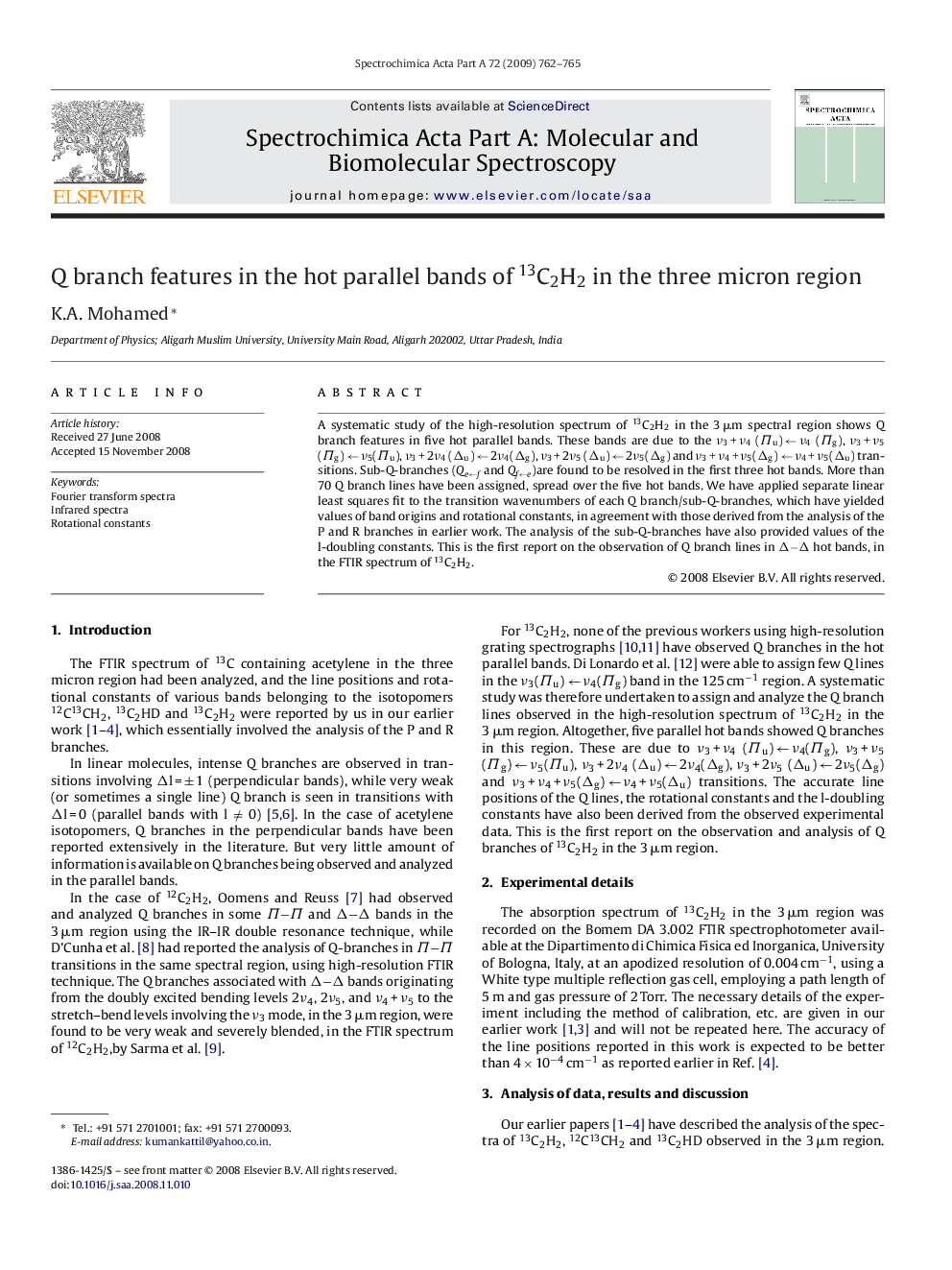| Article ID | Journal | Published Year | Pages | File Type |
|---|---|---|---|---|
| 1237839 | Spectrochimica Acta Part A: Molecular and Biomolecular Spectroscopy | 2009 | 4 Pages |
Abstract
A systematic study of the high-resolution spectrum of 13C2H2 in the 3 μm spectral region shows Q branch features in five hot parallel bands. These bands are due to the ν3 + ν4 (Î u) â ν4 (Î g), ν3 + ν5 (Î g) â ν5(Î u), ν3 + 2ν4 (Îu) â 2ν4(Îg), ν3 + 2ν5 (Îu) â 2ν5(Îg) and ν3 + ν4 + ν5(Îg) â ν4 + ν5(Îu) transitions. Sub-Q-branches (Qeâf and Qfâe)are found to be resolved in the first three hot bands. More than 70 Q branch lines have been assigned, spread over the five hot bands. We have applied separate linear least squares fit to the transition wavenumbers of each Q branch/sub-Q-branches, which have yielded values of band origins and rotational constants, in agreement with those derived from the analysis of the P and R branches in earlier work. The analysis of the sub-Q-branches have also provided values of the l-doubling constants. This is the first report on the observation of Q branch lines in ÎâÎ hot bands, in the FTIR spectrum of 13C2H2.
Related Topics
Physical Sciences and Engineering
Chemistry
Analytical Chemistry
Authors
K.A. Mohamed,
